QI BAISHI (1863-1957)
QI BAISHI (1863-1957) Going to School Scroll, mounted and framed, ink and colour on paper 110 x 43 cm. (43¼ x 16 7/8 in.) Inscribed with a poem and signed, with one seal of the artist Dated xinwei year (1931) Note: The genius of Qi Baishi lies in his ability to evoke with a few simple brushstrokes a play of space and various levels of meaning that engage and stimulate the imagination and intellect. He did not seek to render every detail with scientific accuracy, but he consciously expressed the essence of his subject while omitting extraneous features. Unable to comprehend textbooks during the early development of his craft, Qi Baishi's style was inherently one of folk art, and his observation of nature surpassed any textbook manual of drawing figures and plants. What was to be a simple pleasure eventually developed into a sophisticated and highly enterprising profession. Going to School depicts an everyday scene of a boy unwilling to attend school and transcends any specified time and place. Wang Fangyu in Qi Baishi's Paintings mentioned that Qi painted variations on this theme of taking a son to school, but all depicted an old man in blue, flowing robes and a young boy dressed in red clutching a book, devoid of any background. It has been suggested that the old man is Qi Baishi himself and the child his son. Wang Fangyu speculated that the painting and its later sketches were created around 1930, by which time, his son "Qi-Qi" , born in 1923, would have been 7 years old and school age. Qi's interest in this theme might also stem from his own childhood, for his family could not afford to provide schooling for Qi. When a poem is written as an inscription on a painting in a unified way, their synergy often inspires a new flight of imagination, perception or apprehension in the viewer. The poem inscribed here comes from Qi Baishi's Book of Poetry with the same lines: There are children everywhere, And everyday is play day for them. This one is really a mean old man Who has to take you, alone, to the teacher. It's not wrong to learn to read. go to your mother and then come right back here. Watch out for your tears, Don't let them ruin your red robe.
QI BAISHI (1863-1957)
QI BAISHI (1863-1957) Going to School Scroll, mounted and framed, ink and colour on paper 110 x 43 cm. (43¼ x 16 7/8 in.) Inscribed with a poem and signed, with one seal of the artist Dated xinwei year (1931) Note: The genius of Qi Baishi lies in his ability to evoke with a few simple brushstrokes a play of space and various levels of meaning that engage and stimulate the imagination and intellect. He did not seek to render every detail with scientific accuracy, but he consciously expressed the essence of his subject while omitting extraneous features. Unable to comprehend textbooks during the early development of his craft, Qi Baishi's style was inherently one of folk art, and his observation of nature surpassed any textbook manual of drawing figures and plants. What was to be a simple pleasure eventually developed into a sophisticated and highly enterprising profession. Going to School depicts an everyday scene of a boy unwilling to attend school and transcends any specified time and place. Wang Fangyu in Qi Baishi's Paintings mentioned that Qi painted variations on this theme of taking a son to school, but all depicted an old man in blue, flowing robes and a young boy dressed in red clutching a book, devoid of any background. It has been suggested that the old man is Qi Baishi himself and the child his son. Wang Fangyu speculated that the painting and its later sketches were created around 1930, by which time, his son "Qi-Qi" , born in 1923, would have been 7 years old and school age. Qi's interest in this theme might also stem from his own childhood, for his family could not afford to provide schooling for Qi. When a poem is written as an inscription on a painting in a unified way, their synergy often inspires a new flight of imagination, perception or apprehension in the viewer. The poem inscribed here comes from Qi Baishi's Book of Poetry with the same lines: There are children everywhere, And everyday is play day for them. This one is really a mean old man Who has to take you, alone, to the teacher. It's not wrong to learn to read. go to your mother and then come right back here. Watch out for your tears, Don't let them ruin your red robe.
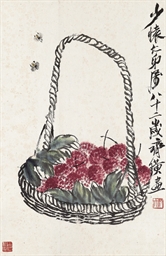

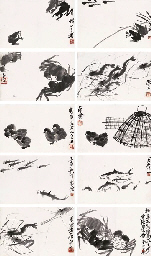
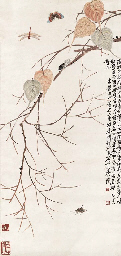
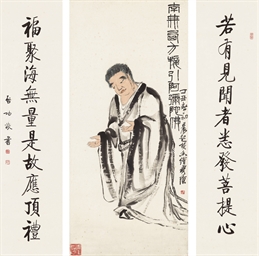
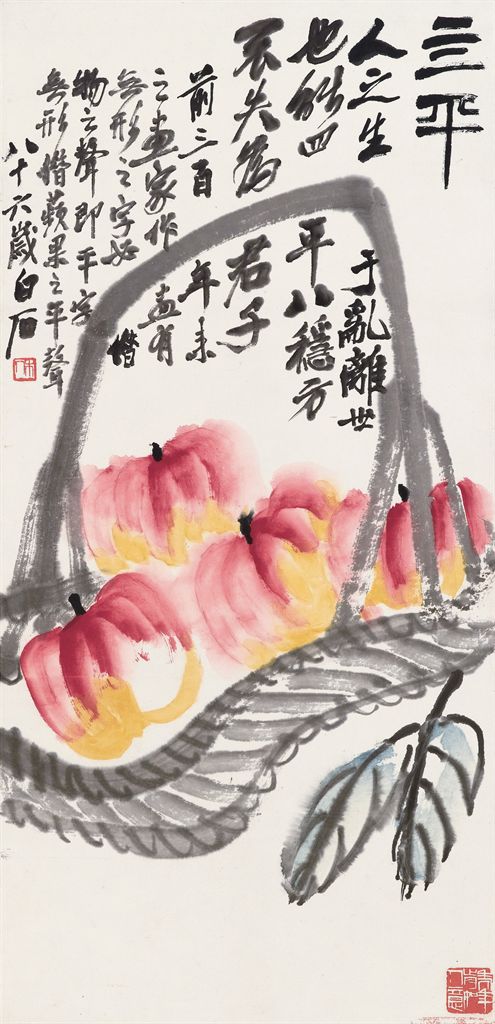
.jpg)


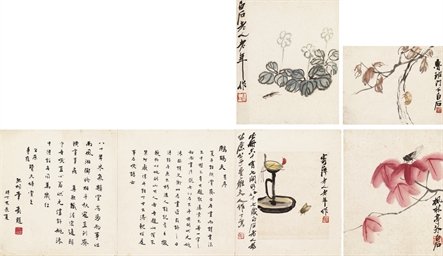

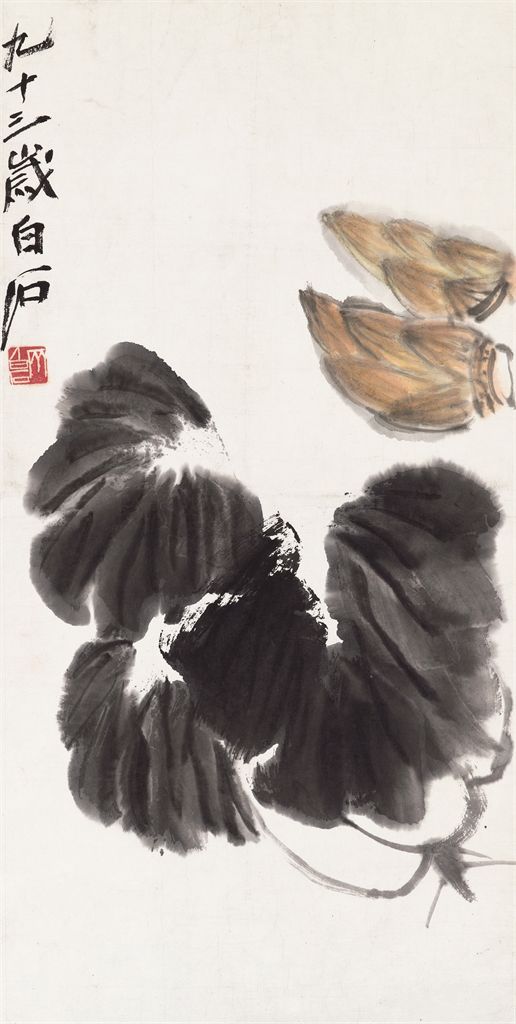



Testen Sie LotSearch und seine Premium-Features 7 Tage - ohne Kosten!
Lassen Sie sich automatisch über neue Objekte in kommenden Auktionen benachrichtigen.
Suchauftrag anlegen